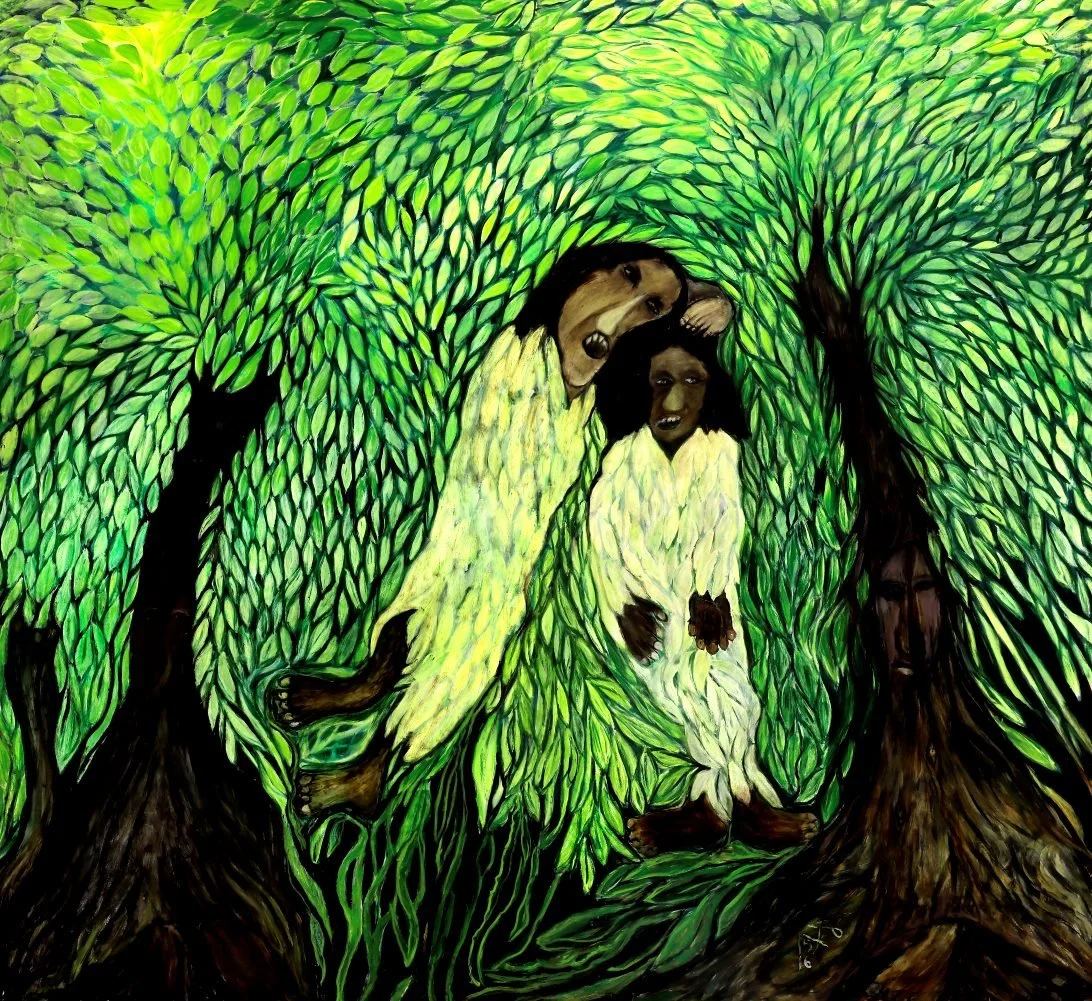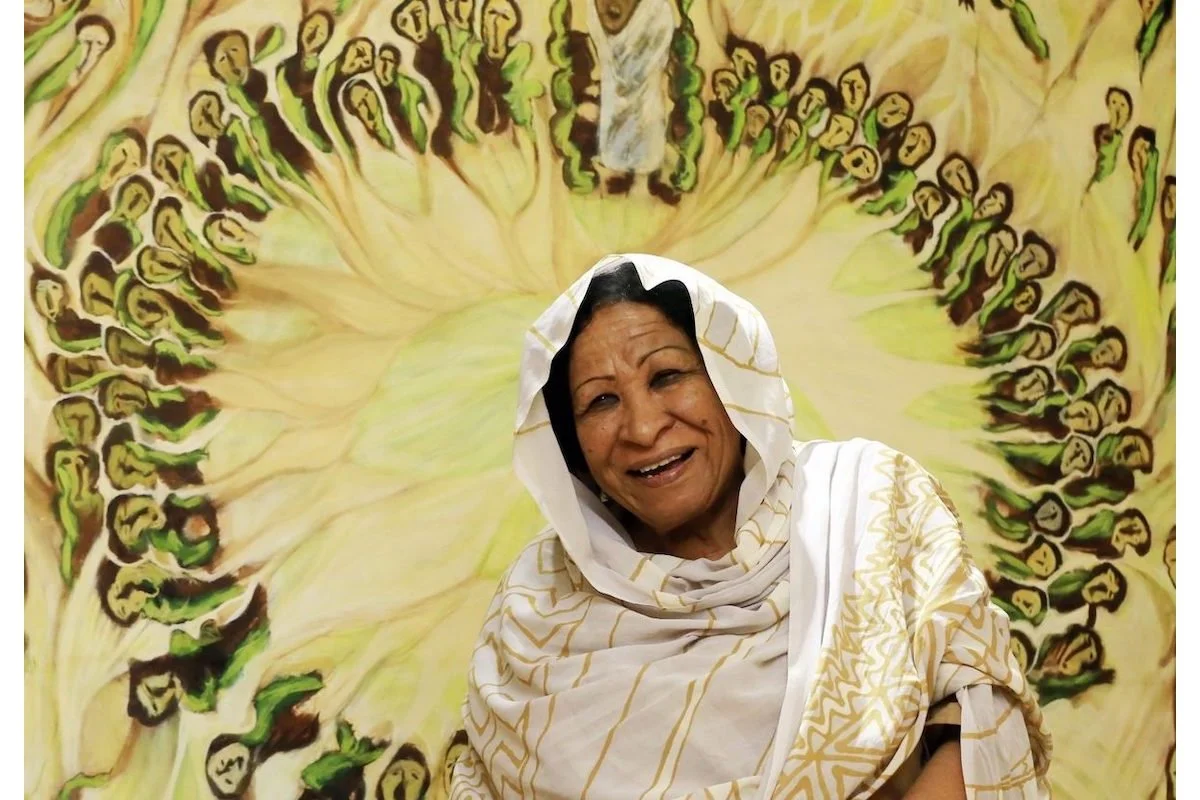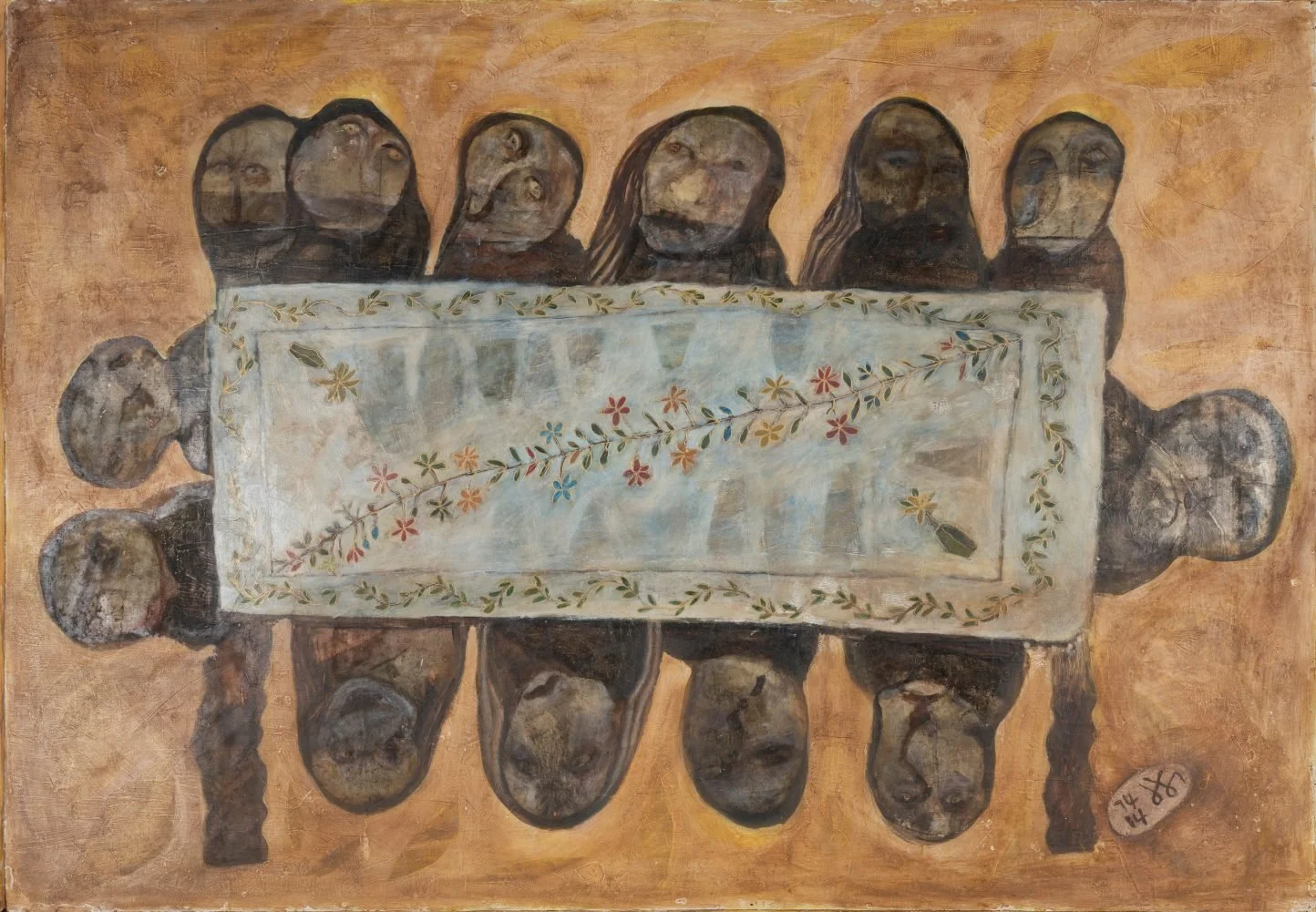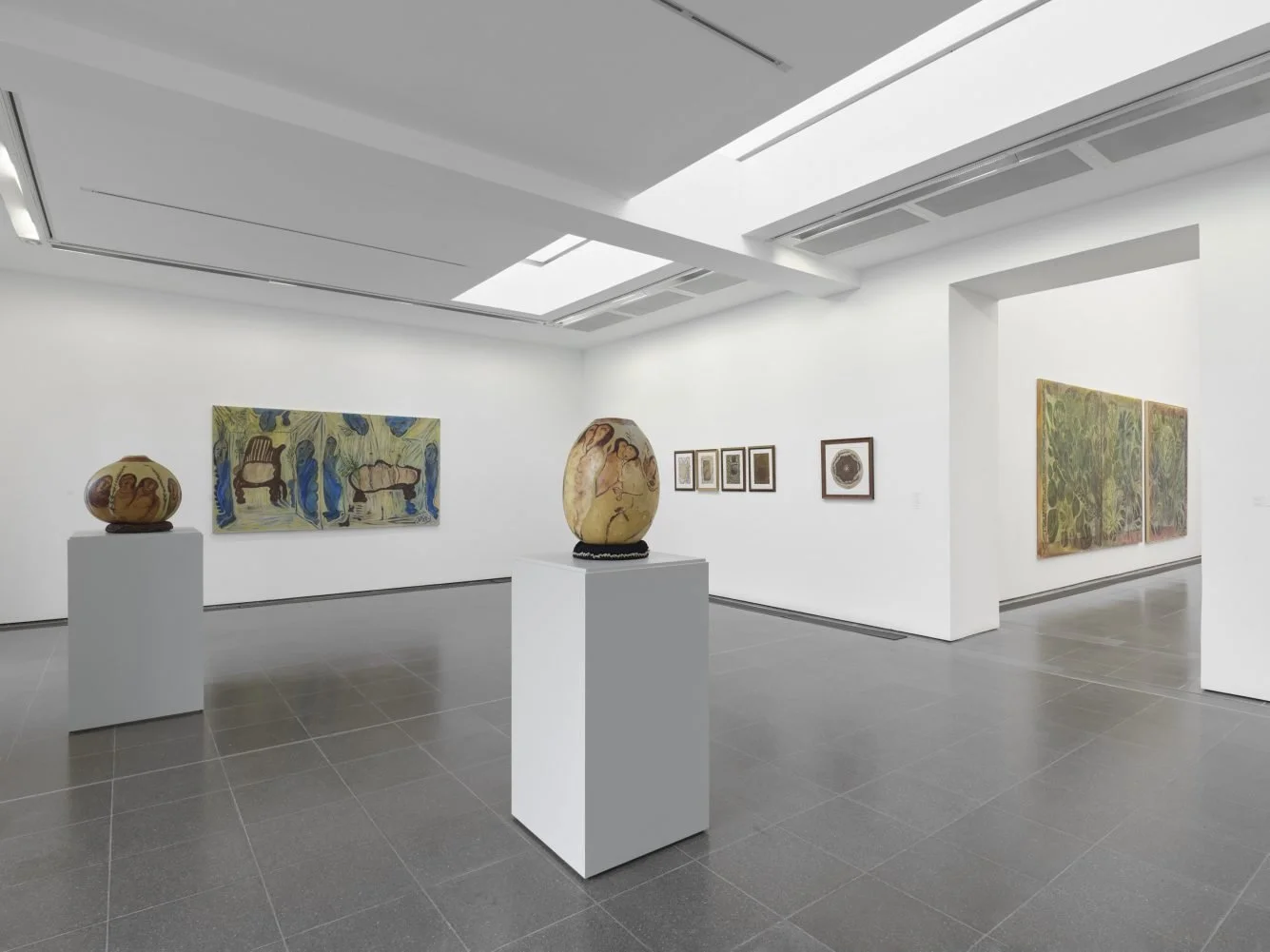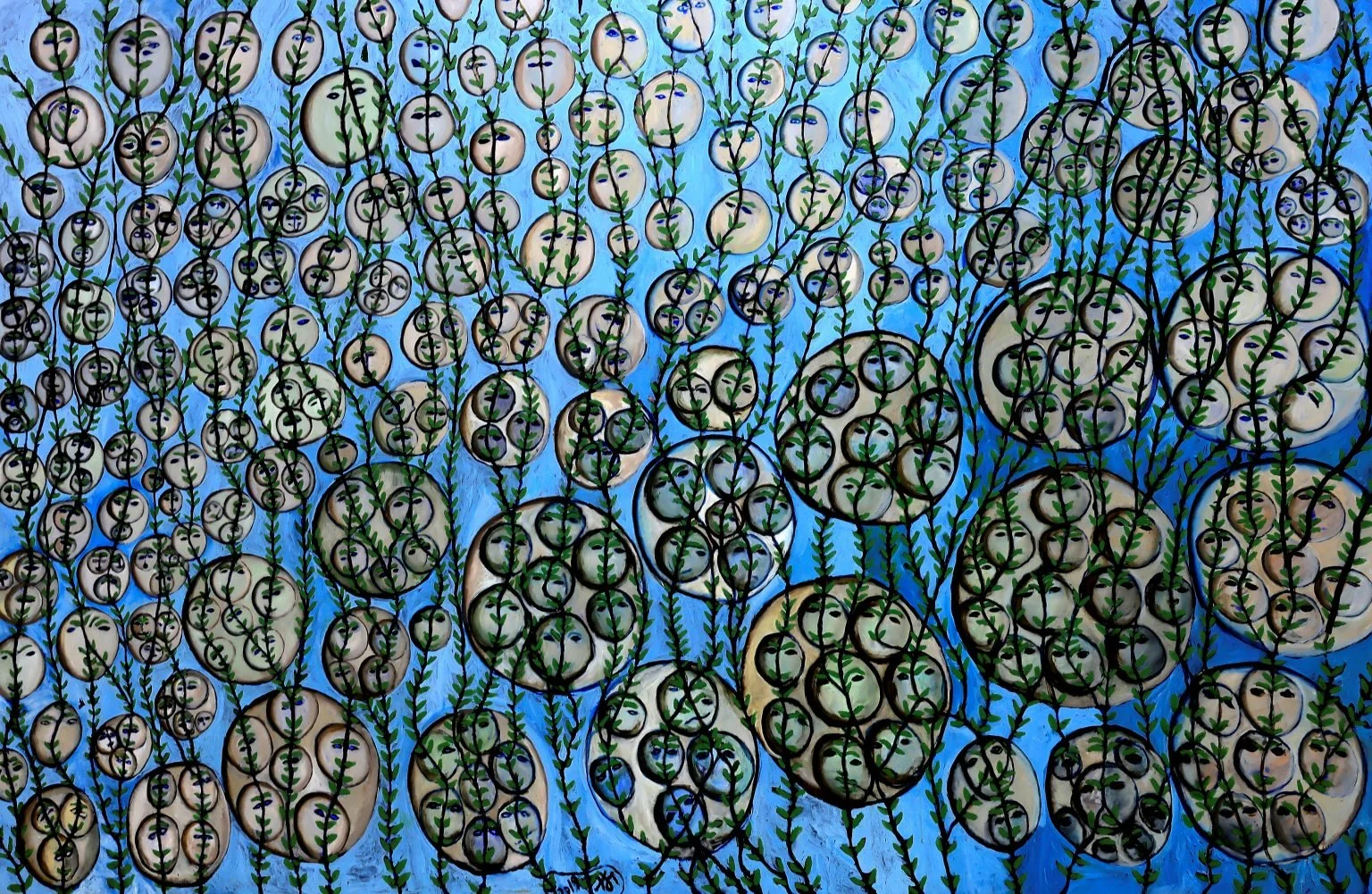The one that is all
Two Women (2016)
Kamala Ibrahim Ishag in Serpentine Gallery
There are two large trees in the middle of Kamala Ibrahim Ishag's house. In fact, her house was built around them, and according to the Sudanese painter, they have always been part of the family, just like all the plants in her garden that are very often the subject of her painting.
"Whenever I return from travelling, I find that some plants have died. They lacked two kinds of nourishment. Lack of nourishment and lack of connection." says the artist, who talks to her flowers and sees no differences between humans and plants. For her, we are all entities whose paths intersect and influence each other, being equal parts within the unity of nature. In her work, existence is a state of fluid boundaries between its manifestations. The deep love and respect for nature that this worldview presupposes make her artistic approach and practice totally idiosyncratic.
The state of oneness
Ishag was one of the first artists to emerge from Khartoum's Art School in the late 60s, and today she is one of the most influential creators of Sudan and Africa. Through her unique artistic language, she seems to filter the entire history of art –which she has studied thoroughly—through African artistic traditions and her personal stories, political beliefs, experiences, and memories.
In her work, which she persistently refuses to rank under any movement or group –not even the one that, as we shall see, was inspired by her very own work― western expressionistic elements are paired genially with African figurative styles, while spiritual ceremonies of her homeland, such as the therapeutic and women only Zar rituals, become surrealistic iconographies, enriched with her influences by creators such as William Blake or Francis Bacon.
Women's magic and practical sorcery have a focal role in her paintings since they highlight women's relationship with nature and her spirits, forming the core of many local myths she was listening to as a child from her community's elders. And Ishag's painting is mainly oriented towards women's everyday life, storytelling, activities, and communities.
Dinner Table with Embroidery (1974)
Walking through her retrospective at the Serpentine Gallery in London, her artistic loans from western art are evident enough to highlight a spiritual continuum between East and West, the unity between peoples but also between people and nature, space and time and organic and inorganic. That is "The state of oneness", as the exhibition's title affirms, a state of unity and wholeness. She has advocated all these ideas since the 70s, when two of her students – Muhammad Hamid Shaddad and Nayla El Tayib― inspired by them, started The Crystalists.
State of Oneness Exhibition, 2022-2023
The Crystalists
The Crystalist Group, or Crystalists, was a pioneer Sudan art group that sought to expand the Khartoum School's modernistic visions ―dominating the Sudanese art scene until the 60s― by bringing up progressive philosophical ideas such as natural flows, perpetual transformation, or nonlinear time. As Shaddad wrote in their manifesto, the basic premise of the Crystalists was "to reject the essential quality of things, for it is now clear that any essence is nothing but a semblance for another essence". The aim of the movement was "to dissolve language and turn it into a transparent crystal that moves in all directions: between the name, the subject, the thought, and their components; between the word and its components; and between the letter and its components." and concludes with "the crystal is nothing but the denial of the objectification of objects. It is infinite transparency."
Although Crystalists' thinking is clearly expressed through Ishag's work –as it's also apparent in specific pieces of the exhibition― she refuses to include her work in the movement. An act, though, that seems even more compatible with the group’s beliefs than if she had accepted to be included.
Blues For The Martyrs (2022)
Blues for the Martyrs
There is a work in the exhibition that is absolutely captivating:
A large-scale blue canvas traversed, from top to bottom, by branches carrying green leaves and sphere-shaped fruits that are transparent like soap bubbles.
From the inside of each sphere, multiple mouthless faces are watching us. The painting has a light and a tragic quality at the same time. Its lines have the simplicity and somewhat sloppy surrealism of a children's artwork. Its blue is like a peaceful sea, a blue with a pleasant light in it. No matter how deep water this peculiar set is located in, the light still reaches it. And the faces may be speechless, but the leaves of the branches seem like giving them mouths, adding something optimistic to a painting inspired by a tragedy.
In June 2019, military forces opened fire against civilians peacefully protesting outside army headquarters, asking for democratic procedures during the election of a government in their country. In the infamous Khartoum massacre, at least 140 protesters were killed, while the total number of victims remains unclear.
"No one slept that night," says Ishag in an interview. With her Blues for the Martyrs (2022), she pays homage to the victims, keeping their spirits alive and giving them visibility and voice, calling us not to forget or ignore that people worldwide are still struggling for democracy. Ishag believes, after all, that if art can't change the world, nothing will. That is why she returned to Sudan after studying at the Royal Institute of Arts in London. To teach art and thus help to change the conditions of unfreedom and oppression in her country.
Kamala Ibrahim Ishag: States of Oneness
Serpentine South Gallery
Until January, the 29th 2023
Gelly Gryntaki
London 2022
this article was published in the art platform widewalls the winter of 2023
